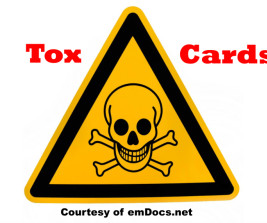CICM Second Part Exam Practice SAQs 13022025
Intensive Blog
FEBRUARY 14, 2025
A 34-year-old patient presents to the emergency department with a suspected recreational drug overdose and is intubated for a low Glasgow Coma Scale (GCS). Examples of common relevant toxidromes include: Sympathomimetic : e.g. agitation, tachycardia, hypertension, and hyperthermia. There is no past medical history of note.










Let's personalize your content